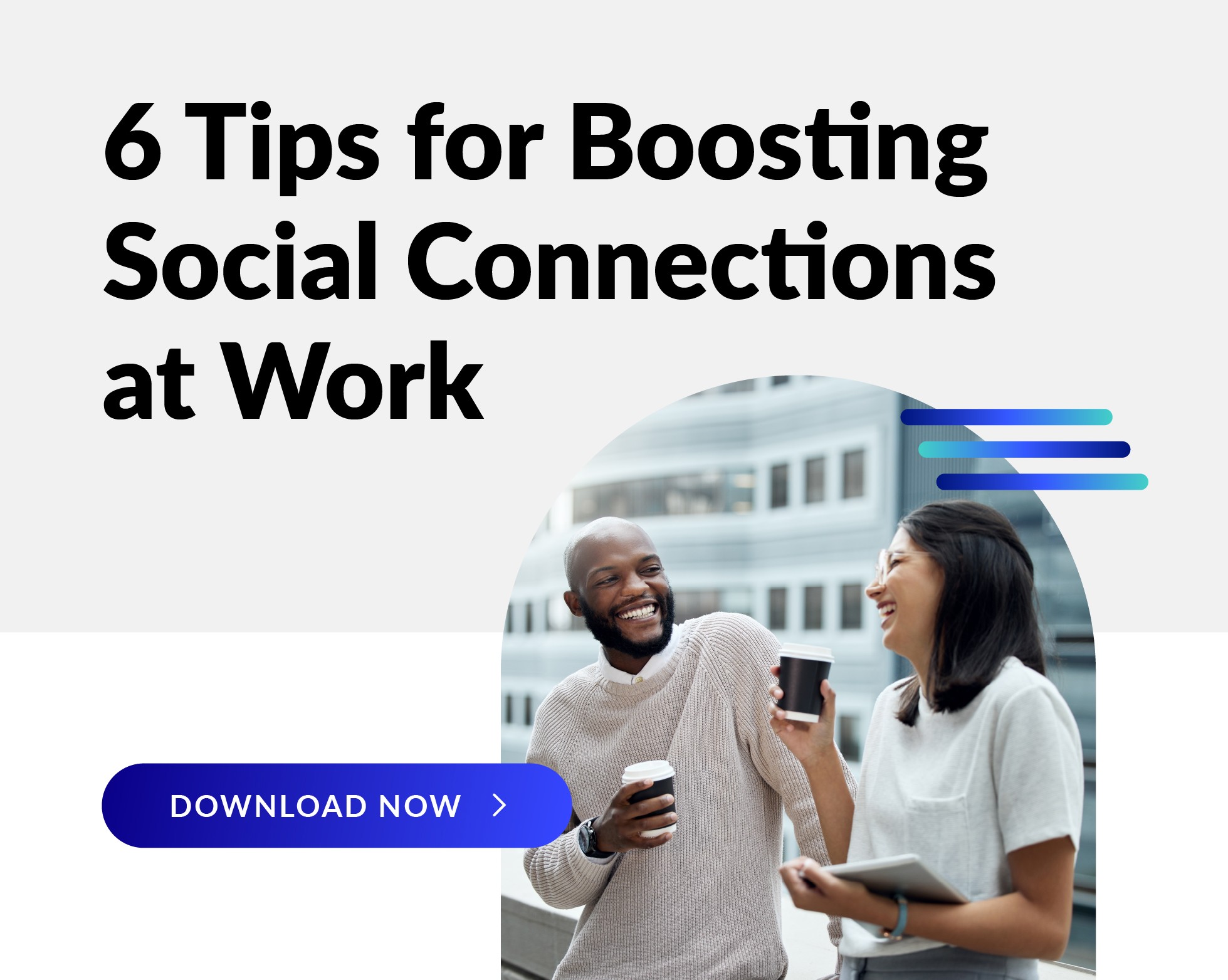 How do you manage mental health in the workplace? Given recent statistics, most employers now understand that supporting mental health is critical to maintaining the productivity and engagement of their workforce. In this week’s blog, we offer tips for managing and supporting your employees’ mental health at work.
How do you manage mental health in the workplace? Given recent statistics, most employers now understand that supporting mental health is critical to maintaining the productivity and engagement of their workforce. In this week’s blog, we offer tips for managing and supporting your employees’ mental health at work.
Recent data on mental health in the U.S. is pretty sobering:
- A 2021 State of Mental Health in America report found that:
- 19% of adults experienced a mental illness, an increase of 1.5 million people over the previous year.
- Suicidal ideation among adults is increasing—up 460,000 people since last year.
- A study conducted by the CDC noted that from August 2020 to February 2021, the percentage of adults with recent symptoms of an anxiety or a depressive disorder increased from 36.4% to 41.5%.
- People reported specific negative impacts on their mental health and well-being for a Kaiser Family Foundation tracking poll, including difficulty sleeping (36%) or eating (32%); increased alcohol consumption or substance use (12%); and worsening chronic conditions (12%) due to worry and stress over the coronavirus.
- A team of researchers reported in Harvard Business Review that 85% of respondents in their study said their general well-being had declined since the pandemic; 89% reported their workplace well-being had declined.
These statistics make it clear that we need to do more to make mental health a priority in our lives. Given that we spend most of our waking hours working, it’s paramount workplaces play a significant role in the effort.
Here are three ways employers can help.
1. Urge employees to focus on self-care.
Self-care works best as a prevention rather than an intervention. Offer employees ideas for what they can do to support their mental wellness over time. This includes recommendations like:
- Check in with yourself. Sit in the moment and describe how you’re feeling. If you notice any of the common warning signs of mental illness—such as feeling sad or withdrawn for more than two weeks or experiencing drastic changes in mood, behavior, personality, or sleeping habits—talk to someone.
- Socialize with others safely. Experts say social interaction is key to our mental health.
- Continue to get outside for fresh air and sunlight.
- Make even a small amount of exercise a priority each day. A 15-minute walk, some simple stretches, or squats during a virtual meeting is all it takes.
- Plan something to look forward to—a nice meal, a fun activity with a partner or kids, a day spent hiking on a nearby trail.
- Check in on friends and loved ones. That social connection is important not only for them, but also for you!
- Doing good makes us feel good, so encourage employees to engage in some local community service. Even better, do it as a team!
- Continue to enforce boundaries between work and home life, ending workdays on time and observing real weekends.
- Make a list of the things within your control and the things you have no control over. It’s essential to make that distinction and use your time and energy to focus on tasks that are within your control.
- Dedicate at least 15 minutes each day for a “brain break.” This can be meditation, deep breathing exercises, or simply practicing gratitude for the good things in our lives.
2. Make the importance of good mental health part of your corporate culture.
Increasing emotional wellness at work starts with talking about it regularly in your employee communications, promoting your resources, and sponsoring events and discussions about mental health. Here are a few suggestions:
- Observe or hold events around nationally recognized mental health awareness months, like Suicide Awareness Month in September and Mental Health Month in May. Think lunch & learns, guest speakers, promotional items, and similar events.
- Create an employee resource group (ERG) dedicated to mental health. Johnson & Johnson’s mental health ERG members serve as “diplomats” who provide resources, education, and support for mental health to other colleagues. The group also trains members on how to spot signs of mental health problems in coworkers.
- Provide employees a forum to share their stories and struggles with mental health. Videos on workplace social media are especially powerful. Make sure to feature key leaders to help normalize mental health at all levels and show their support for mental health initiatives in the workplace.
- Promote your Employee Assistance Program (EAP). The EAP is probably one of the most underutilized yet hugely valuable benefits you offer, so be specific about the services it provides.
- Include mental health content in every issue of your monthly health and well-being newsletter.
- Leverage the employee benefits enrollment period to promote mental health benefits just as you would physical health benefits.
- Form support groups on workplace social media around common mental health concerns like anxiety or depression.
- Recommunicate policies on paid time off, family leave, extended leave, or sabbaticals. If you added new benefits at the beginning of the pandemic, people might need a reminder.
3. Give managers tools to support their team’s mental health.
Not every manager is comfortable talking about mental health. But if they have the right tools, the conversation can be much easier. Create a mental health managers’ toolkit with content on:
- Checking in on mental health regularly with team members. Include tips for getting the conversation going beyond the typical “I’m fine” response.
- Where to go for what. Provide a list of the company’s mental health resources that a manager can pull out quickly during a meeting.
- How to model good mental health behaviors. List the ways managers can show how they make mental health a priority in their own lives—scheduling exercise, not working on weekends, taking time off—in addition to sharing their own struggles and letting team members know it’s OK to take a mental health day.
- How to build mental health care into the workday. List some strategies managers can use to normalize the prioritization of mental health, such as “mental health minutes” at the start of team meetings or blocking time on calendars for a mental health break—whether that’s meditation or just taking a walk.
- Ways a manager can be helpful. Sometimes an employee needs someone to listen, and other times they need a solution for what they are dealing with. Share ideas for how managers can adjust workloads, negotiate more reasonable due dates, or reassign work to allow employees time off to recharge.
Keep in mind that all ideas to improve mental health in the workplace will take time to roll out, and it may take some time before employees feel comfortable enough to access mental health benefits. But with greater awareness that taking care of our mental wellness is just as important as taking care of clinical health—and a concerted employer effort to support employees in the workplace—we can start to make some real progress.
If you need help developing mental wellness benefits and encouraging your employees to use them, visit our website or contact us at connect@webmd.net.
Related Content:

